Pakistan misses three key IMF targets
Slippages seen as manageable ahead of next month's review talks
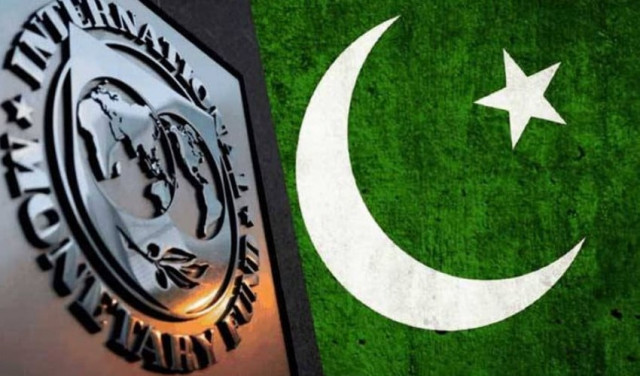
Pakistan has met only two out of five key fiscal conditions set by the International Monetary Fund (IMF) for the second review of the $7 billion bailout package, as provinces failed to generate the required cash surpluses and the federal government missed its tax targets.
Despite these shortfalls, the government is unlikely to face serious hurdles during the upcoming review talks — expected to begin next month — for the release of the next $1 billion tranche, due to progress on other critical benchmarks.
According to a fiscal operations summary released by the Ministry of Finance, the provinces fell short of saving the targeted Rs1.2 trillion in the last fiscal year, which ended in June. A sharp rise in provincial expenditures contributed to missing the cash surplus target.
Likewise, the Federal Board of Revenue (FBR) missed its two key conditions of collecting Rs12.3 trillion total revenues and Rs50 billion from retailers under the Tajir Dost Scheme during the last fiscal year.
But the mother of all fiscal conditions — generating a primary budget surplus of Rs2.4 trillion — has been met along with the total revenues collected by the four provinces.
This is the second consecutive year of primary surplus and the highest in 24 years, surpassing the IMF target. The Finance Ministry tried hard to stay on the fiscal patch but the setback came from the provincial capitals, which were not in the control of the federal government.
The overall fiscal deficit also reduced to 5.4% of GDP or Rs6.2 trillion, which was well below both the original target of 5.9%. The finance secretary kept a tight check on the expenditure throughout the fiscal year.
The IMF has set about 50 conditions under the $7 billion bailout package; some of those are monitored on a quarterly and annual basis and are linked with the approval of the loan tranches.
The government has managed to achieve relative fiscal stability but the official data showed that the federal government's net revenues were still Rs1.2 trillion less than its needs for just two heads; interest payments and defence spending. The rest of the expenditures are incurred by taking more loans.
Against a primary surplus target of Rs2.4 trillion, the federal government reported a surplus of Rs2.7 trillion, or 2.4% of gross domestic product (GDP), according to the ministry.
The Ministry of Finance had to do eleventh-hour management to make sure that the primary surplus target was met after the provinces could not throw promised cash surpluses and the federal development spending shot up beyond the expectations of the Finance Ministry.
The provincial governments had given the understanding to the IMF and the federal government to generate Rs1.2 trillion cash surpluses. However, the four provinces collectively generated a cash surplus of Rs921 billion, missing the IMF target by 280 billion.
A breakdown of provincial performance shows that Punjab, with total revenue of Rs4 trillion, spent Rs3.6 trillion, generating a surplus of Rs348 billion. However, the province recorded a statistical discrepancy of Rs41 billion, mainly due to below-the-line expenditures to retire wheat debt.
Punjab spent Rs1.03 trillion on development, which was almost equal to the federal development spending across Pakistan. Sindh booked a cash surplus of Rs283 billion after spending Rs2.3 trillion, which was well below its total revenues. The province also reported Rs48 billion statistical discrepancy.
Khyber-Pakhtunkhwa (K-P) recorded a budget surplus of Rs176 billion, with Rs1.5 trillion in income and Rs1.3 trillion in expenditures. K-P also had a statistical discrepancy of Rs155 billion.
Balochistan generated a surplus of Rs113 billion, meaning the province has more revenue than its needs. Its total expenses amounted to Rs767 billion as against Rs881 billion in income. In April this year, the federal government increased the petroleum levy rate by Rs8 per litre in the name of funding Balochistan roads.
The provincial governments enjoy significant fiscal flexibility due to increased revenues under the National Finance Commission (NFC) award.
Planning Minister Ahsan Iqbal has proposed to the prime minister to overhaul the current NFC award by adding new benchmarks and performance evaluations parameters to ensure that huge resources are spent on the welfare of the people.
the provinces recorded tax collection of Rs979 billion in the last fiscal year, exceeding the IMF target by a margin of Rs58 billion. The federal government's tax revenue performance remained encouraging but it missed the key targets.
The FBR failed to collect any significant revenue under the Tajir Dost Scheme against the target of Rs50 billion for the last fiscal year. The traders' income tax contribution through withholding taxes too remained negligible compared to salaried class's Rs555 billion payments in the last fiscal year.
Moreover, against the IMF-given revenue target of over Rs12.32 trillion, the FBR pooled Rs11.74 trillion.
Thanks to the central bank and millions of people paying petroleum levy, the non-tax revenues amounted to over Rs5.6 trillion, higher by 30%. The petroleum levy collection amounted to Rs1.22 trillion after the prime minister increased the rates to Rs78 per liter.
On the expenditure side, the federal government spent a total of Rs17.1 trillion, with current expenditures reaching Rs15.8 trillion. This represented an Rs2.3 trillion or 15% increase in total expenditures compared to the same period last year, primarily due to rising interest payments.
The federal government paid Rs8.9 trillion in interest costs, an increase of Rs729 billion from the previous year. Defence spending amounted to Rs2.2 trillion, higher by 18%.
After distributing the provincial share worth Rs6.9 trillion, the federal government's net income stood at Rs9.9 trillion. This was Rs1.2 trillion less than the combined spending on interest and defence.
The Finance Ministry said that its primary current expenditures remained well within the targeted ceilings. The primary reason for this was lower releases of subsidies, which stood at only 49% of the allocated target. The federal PSDP spending increased to Rs1.05 trillion, which was 43% higher than the previous fiscal year.








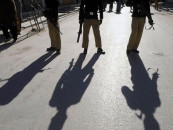
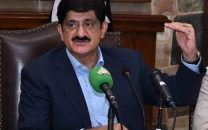

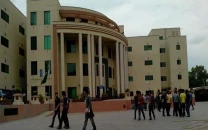

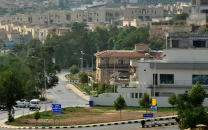








COMMENTS
Comments are moderated and generally will be posted if they are on-topic and not abusive.
For more information, please see our Comments FAQ